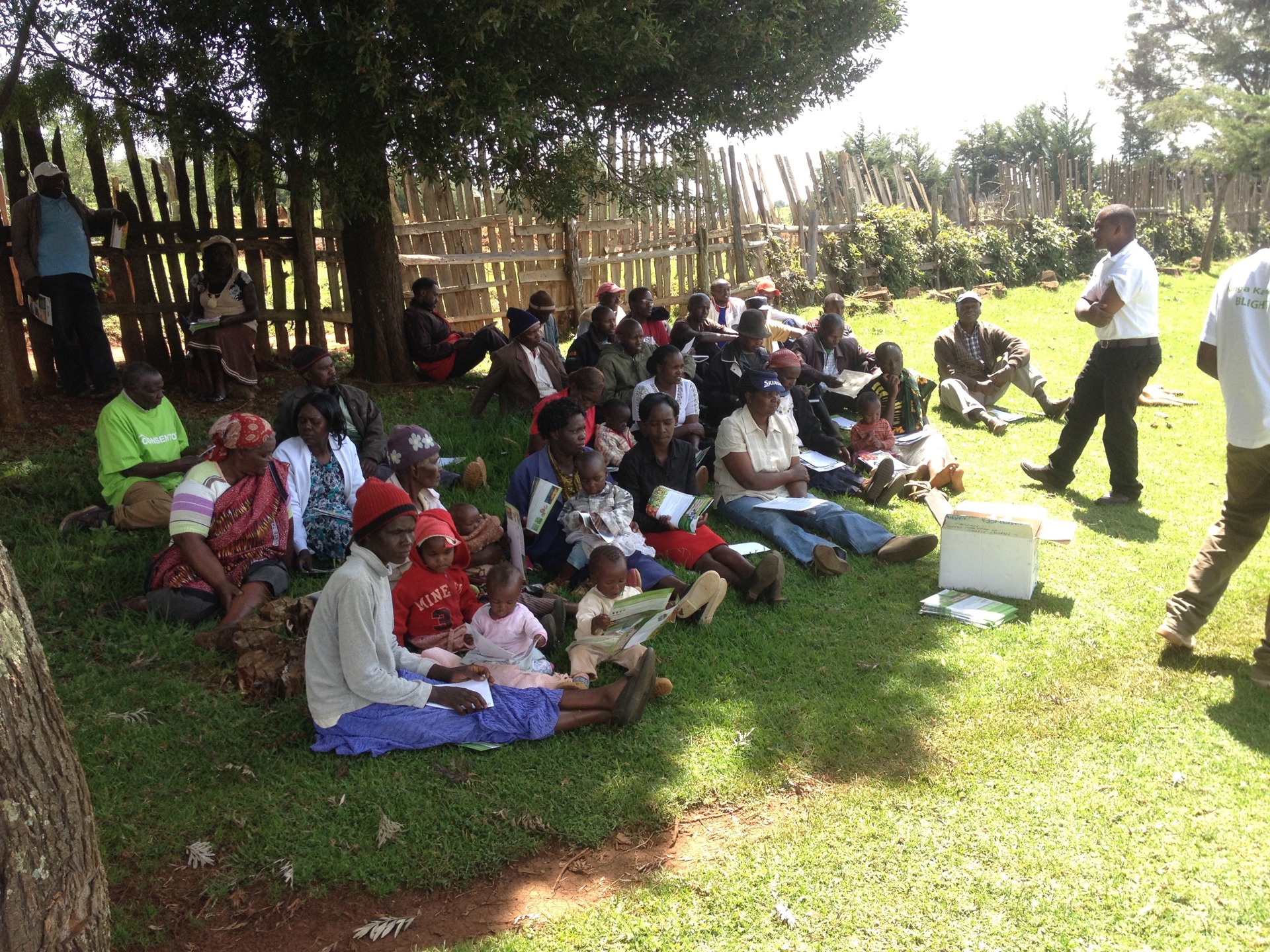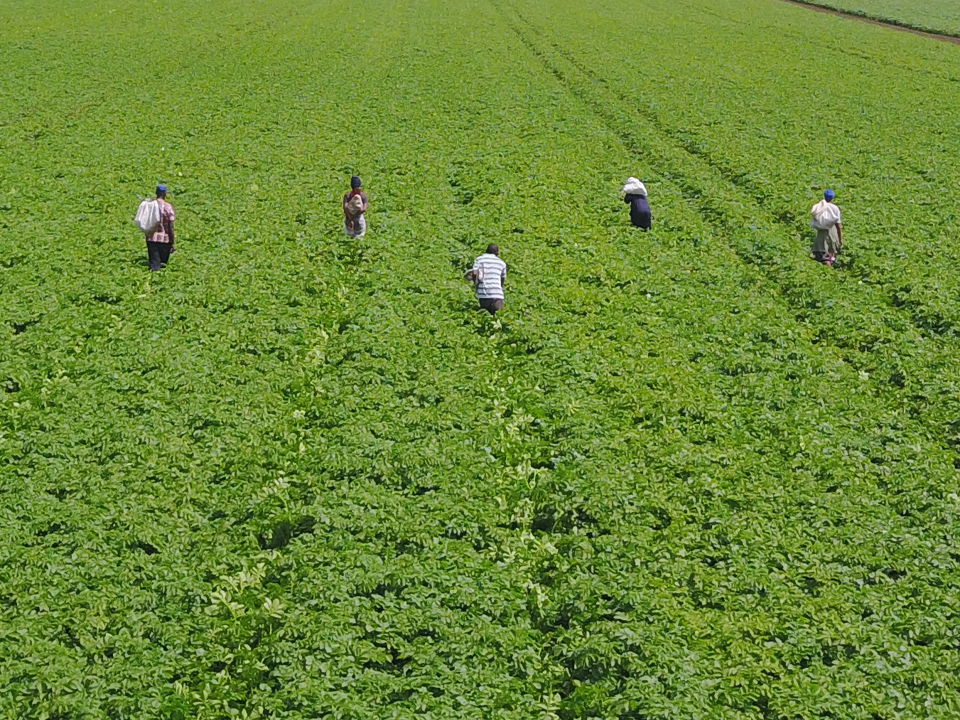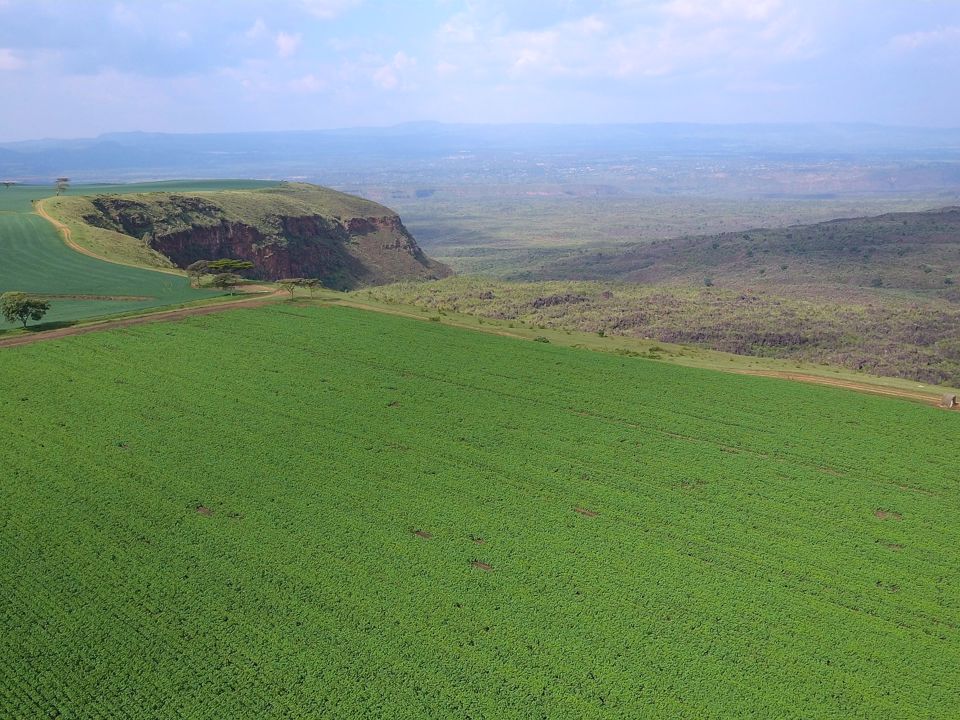Be connected
to boost your
net income and
lower your risk!
Say potato, say Agrico

Lessons learned from the 'Smallholders Potato Initiative’
In 2019 I joined this initiave from Bayer, Yara and Agrico PSA, as one out of the over 1,700 Kenyan farmers in this specific potato program. This decision turned out to be my most profitable farming experience and my journey is on-going.
Become a connected farmer
The key goal of this smallholder income growth program was to become a so-called ‘connected farmer’. This means providing potato farmers access to:
- certified seed potatoes
- crop nutrition
- crop protection
- off-takers
- (micro) finance
- knowledge & training
Connected farmers would witness a boost in their net income. The three Kenyan based companies provided extensive support to almost 2,000 farmers in three counties (Meru, Narok and Nakuru) on all these topics.
An important part of the program consisted of ‘potato farmers joining forces’, meaning creating/expanding groups with neighbouring farmers that jointly sold their realised output directly to off-takers. Different farmer groups were created or expanded, my surrounding farmers and I created a new Self Help Group (SHG) of 20 smallholder farmers.


Potato farming finance
In a few months my fellow farmers and I not only specialised ourselves in intensive potato farming practices, but we also learned all details about potato farming finance. To be honest, the latter was a shock to many of us. The majority of us had a straightforward way of measuring our expenses vs income until then, namely by simply deducting all input costs (like the seeds, fertilizer, chemicals) from turnover (revenue from sales).
Step by step we became aware that all the years our input cost estimates were actually overly optimistic. With our old way of bookkeeping we forgot to include many other cost, such as labour, equipment and microfinance cost. When really taking all costs into consideration, and thus basing our financial results on modern accounting practices, many of us learned our previous potato farming was hardly profitable – or even loss making – until now. “Wacha kichwa inauma” was our most common response during the potato finance education.
Combined approach of high quality seed and GAP
The good news is – as a result of the ‘connected farmer approach’, all of our SHG members experienced massive yield improvements on each individual farmer’s shamba. Previously, my average potato yield was about 2.4 tonnes per acre, but after undergoing training it was boosted towards an incredible 14.4 tonnes per acre! Actually, this also happened to be the average yield improvement achieved by all the 1.700 potato farmers.
But this is just part of the improvement: I also experienced 50% less rejections from off-takers. The better tuber quality was again thanks to the combined approach of high quality seed that has potential to give high yield, a good nutrition for the potatoes to give bigger and better tubers, and also serious crop protection to ensure no pests & diseases could attack my plants or tubers.
Thanks to better tuber quality, we all experienced less rejects and we received a higher price for our potatoes.


Better bargaining power and improved knowledge
Due to all these massive improvements, my turnover became almost 8 times higher: it grew from ~KES 41,000 / acre to almost KES 360,000 / acre. This in itself was unbelievable and a massive experience. But even more important: using what we learned in our financial classes, I was now able to calculate that my net income boosted even more. When taking all costs into account – certified seed potato, nutrients, crop protection, labour, land etc. – I realised a beautiful profit of almost KES 200,000 / acre. Within one growing season I managed to improve my previously loss making potato farming into a highly profitable business!
In some aspects, thanks to coming together as a group, we had a better bargaining power when it came to organizing the logistics to purchase the certified seeds and other inputs. But also when approaching the market, thanks to a bigger volume that we could offer the buyers, we had a stronger voice to get a good price for our potatoes. During the growing season, we were also able to help and mentor each other as farmers by visiting one another, and asking questions to the specialists from the companies supporting us in this (Bayer, Yara and Agrico PSA).
Further improvements are even possible
The success story doesn’t end with me. Some of my neighbouring farmers managed to be even more successful than I was. They were able to reach yields of even 20 tons / acre and therefore their turnover went up to KES 600,000 / acre, with a net profit of almost KES 500,000 / acre.
By maintaining my ‘connected farmer’ roadmap and continuously improving my intensive agronomical practices I am convinced I will reach these results also in the near future.

Become a successful potato entrepreneur!
Finally, my potato business has become much less risky than before. My potato cost price has dropped dramatically due to the higher yields per acre. This means that I am much better protected from unforeseen setbacks in for instance yields (due to poor weather conditions) and / or changes in market demand during any given season. My yield and / or sales price could drop significantly and still my business remains profitable. I am proud to say I have become a successful potato entrepreneur!





